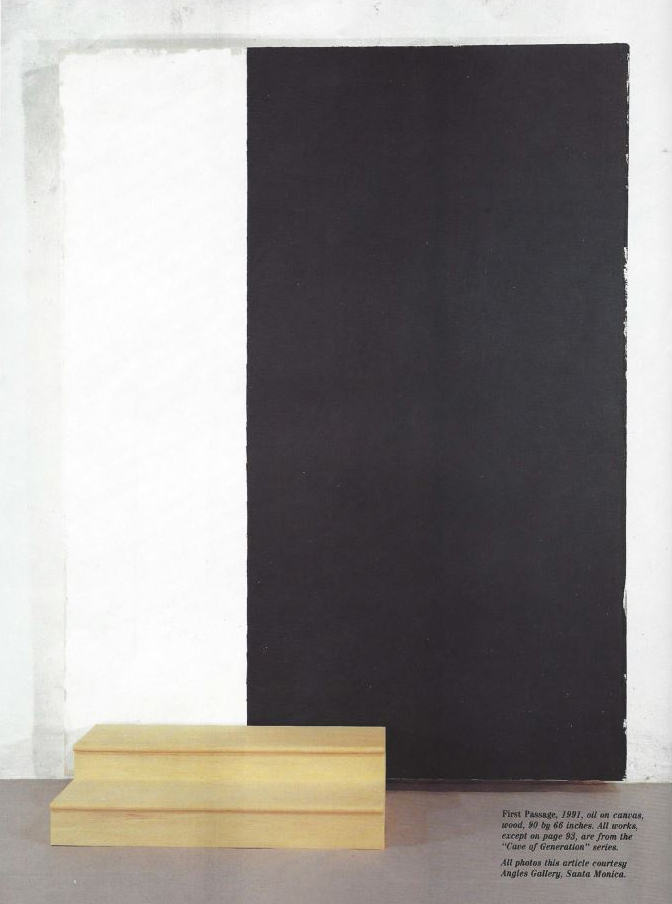Project Description
Cave of Generation
Graham’s most recent work advances still further in this direction.”Cave of Generation”-shown in part in February at Angles Gallery in Santa Monica and currently on view in its entirety at the Fisher Landau Center, Long Island City-is conceived as an extended visual poem. It is composed of a numbered sequence of 16 “passages” bracketed at beginning and end by two “refrains,” each work consisting of one or sometimes two abutting canvases in front of which is placed a set of wooden steps with two risers. The canvases-varying in width but all 71/2 feet high and 41/2 inches thick-are covered with multiple layers of thin oil paint, built up with a knife to a subtly textured plane. Properly lit and viewed head on, these surfaces tend to slip out of focus, dissolving into an ambience of pure color-lead white, black, gray and pale-yellow ocher. Even the undefined reflections of the steps or of direct lighting appear in the surface as much as on it. In a few canvases, a thinner, more factured paint application leaves bare some patches of the canvas. Generally, though, the paintings are subdivided into rectilinear areas of color that are demarcated with hard edges, yielding graphically simple compositions whose reductive formal clarity belies the works’ spatial and perceptual complexity.
It is the addition of the steps, however, that gives these works their most remarkable aspect. Meticulously crafted of different species of pine, they are positioned on the floor before each canvas so as to contribute to the overall composition. While they initially seem to imply access to the space of the painting, they are, of course, nonfunctional; they figure instead as abstract elements.
Perhaps more like a stage set than a painting or sculpture, each work from “Cave of Generation” implies the presence of a human figure imaginatively climbing the steps and crossing into a different luminous realm. In First Passage, the steps are centered on the vertical line where a white rectangular field to the left meets a much broader black field to the right, presenting us with an encounter of opposites. In Seventh Passage, a black bar is painted across the top of the canvas like a heavy lintel, seeming to threaten our passage across the threshold.
The later “passages” in the sequence are generally more subtle in tone and value than those at the beginning. They play on our memory of the earlier ones, which prepare us for subsequent moments of recognition and reflection. Fifteenth Passage, while almost identical in composition to the Seventh Passage, entices us into a warm light that seems to issue from beyond its even, scrimlike surface; a bar of ocher spanning the painting’s top edge serves almost as a beacon drawing us toward the center’s soft glow. The final numbered work, Sixteenth Passage, is a luminous off-white vertical canvas, completely without contrasting internal elements except for the almost imperceptibly exposed edges of raw canvas. These physical reminders seem all but lost, however, in the pure radiance that appears to emanate from beyond the translucent surface.
The 14-foot-wide canvases of the opening and closing “refrains” seem to expand laterally before us like vast seas, the deep blue of their surfaces flickering with muted reflections of light. The steps at the center of these vast expanses beckon us to enter the inky darkness that seems to fold around us. A strong awareness of one’s own body is countered by a simultaneous sense of release from physical constraint. We feel ourselves here, in this place, yet envision ourselves there, beyond the threshold of what is both wall and doorway.
Considered as a whole, “Cave of Generation” suggests an entire course of experience, prompting us to imagine a journey that is both intimate and universal. This epic quality is reflected in the text from which its title is derived. On the Cave of the Nymphs is a 3rd-century A.D. Neoplatonic discourse by the philosopher Porphyry, which Graham read while working on the series. In a commentary on the passage in the Odyssey that chronicles the return of Odysseus to his native Ithaca and his encounter with Athena, the goddess of wisdom, near the Cave of the Nymphs, Porphyry evokes the soul’s descent into the “cave of generation”; he likens this journey to a “passage over the sea of time and space” in search of the soul’s “native kingdom.”Porphyry’s “cave of generation” has two entrances: one for mortals, those about to be born, who enter through the gate of desire; the other for immortals, those returning to their sacred source through the “gate of the gods.”
Although “Cave of Generation” is not illustrative of Porphyry’s text, it may be seen as representing, in a surprising contemporary form, the ancient myth of the spirit and its continual passage through the gateways of birth and death. Graham’s work evokes such mysteries by inviting us to attempt the elusive passage between contraries, between words and things, between what is known and what is felt, between physical and spiritual being. His work asks questions but provides no answers. It points the way to a place without form or temporality, but does not take us there. For, as A.K. Coomaraswamy has pointed out, such a realm is, “in the last analysis, not any where or when, but within you.”
Written By Kathleen Shields / Art in America, June 1992 / Review of Cave of Generation at the Fisher Landau Center in Long Island City, NY.
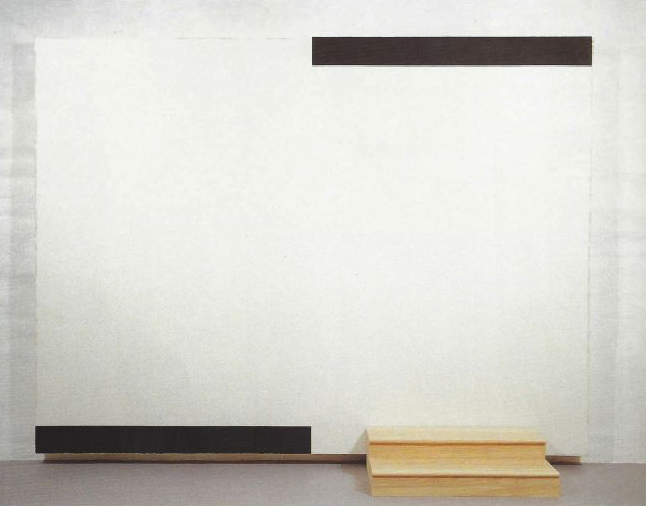
Allan Graham: Sixth Passage, 1991, oil on canvas, wood, 90 by 120 inches; from the “Cave of Generation” series. Panza di Biumo Collection.
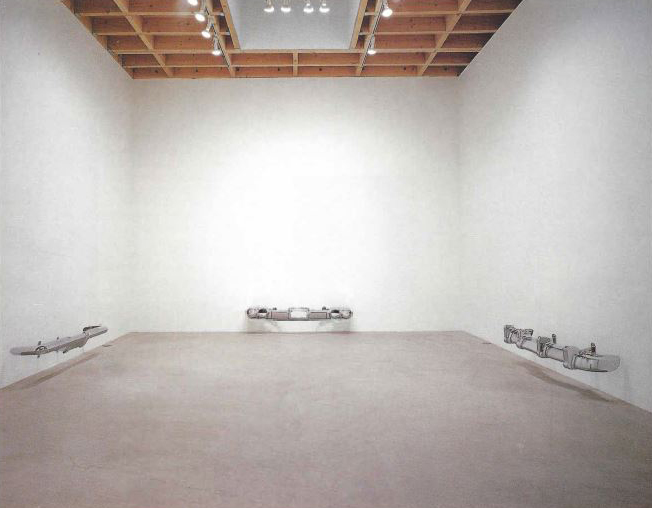
Installation view of mud has its place, 1990, vinyl on chromed steel. Panza di Biumo Collection.
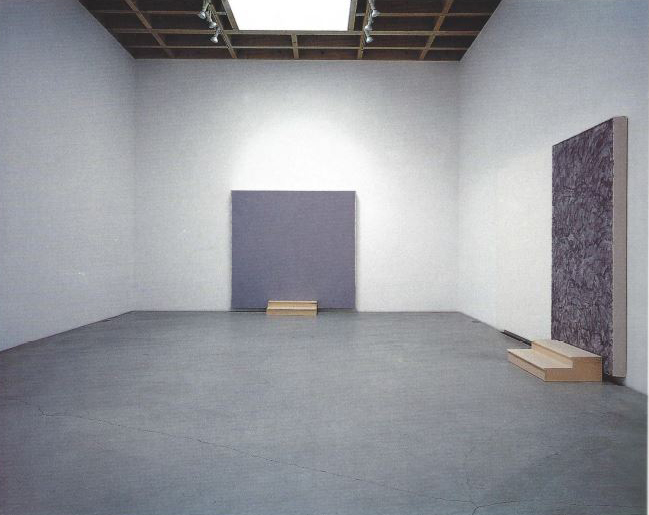
Installation view showing Ninth Passage, 1991 (center), and Eleventh Passage, 1991 (right). Photo Brian Forrest.
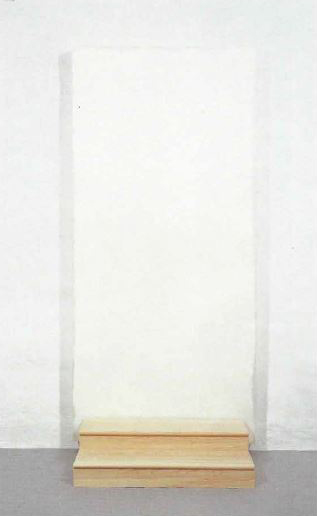
Sixteenth Passage, 1991, oil on canvas, wood, 90 by 42 inches. Collection Emily Fisher Landau.
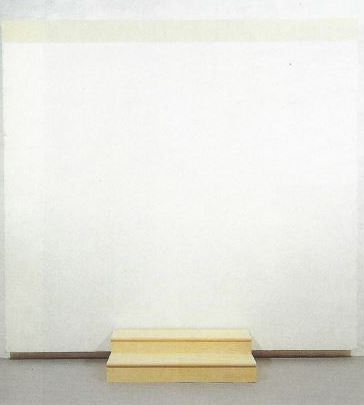
Fifteenth Passage, 1991, oil on canvas, wood, 90 by 96 inches. Collection Emily Fisher Landau.
